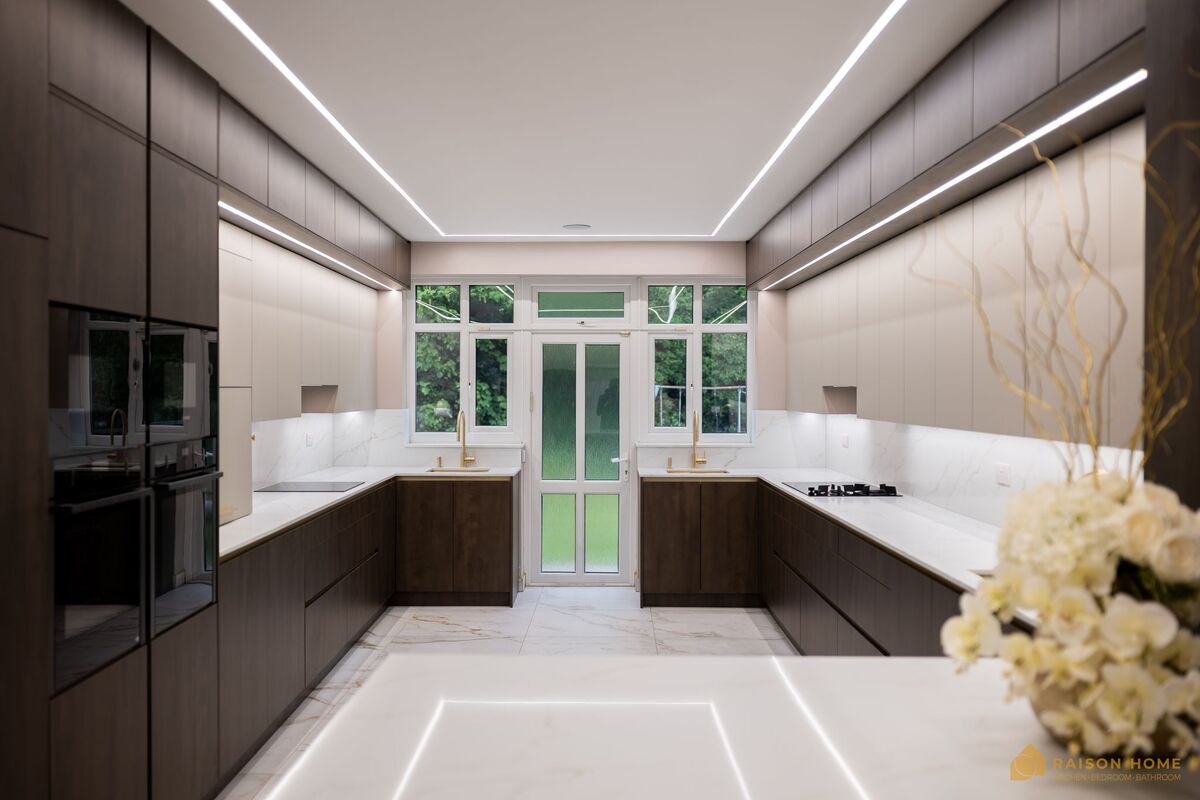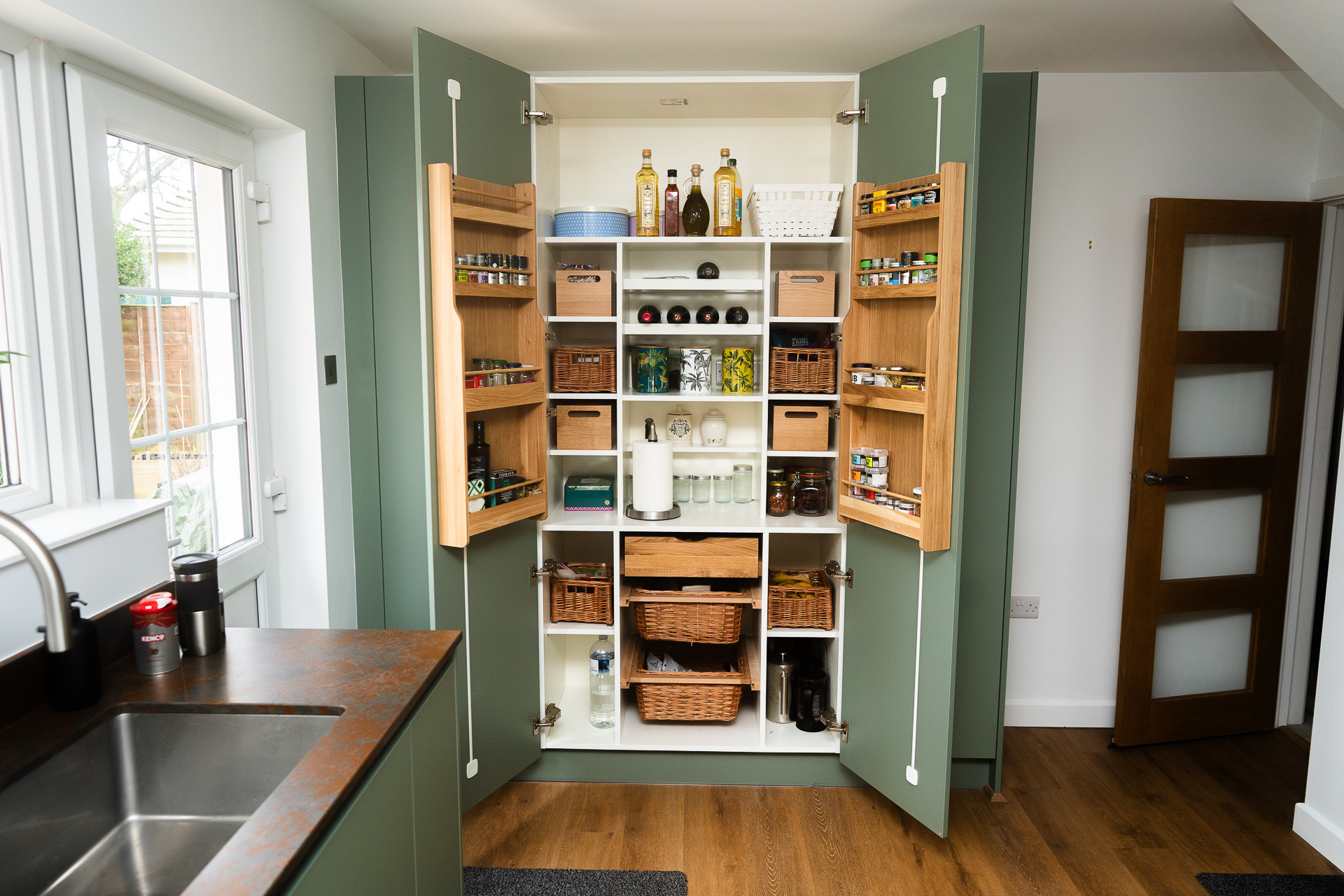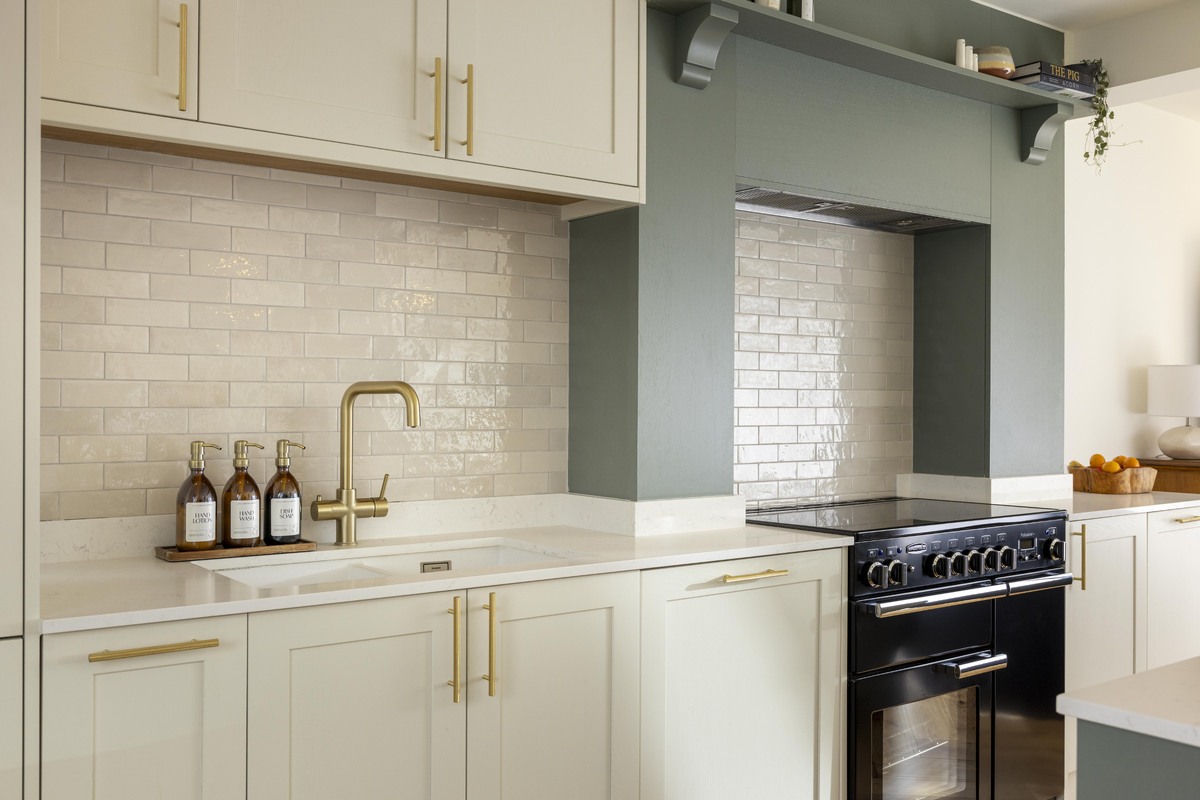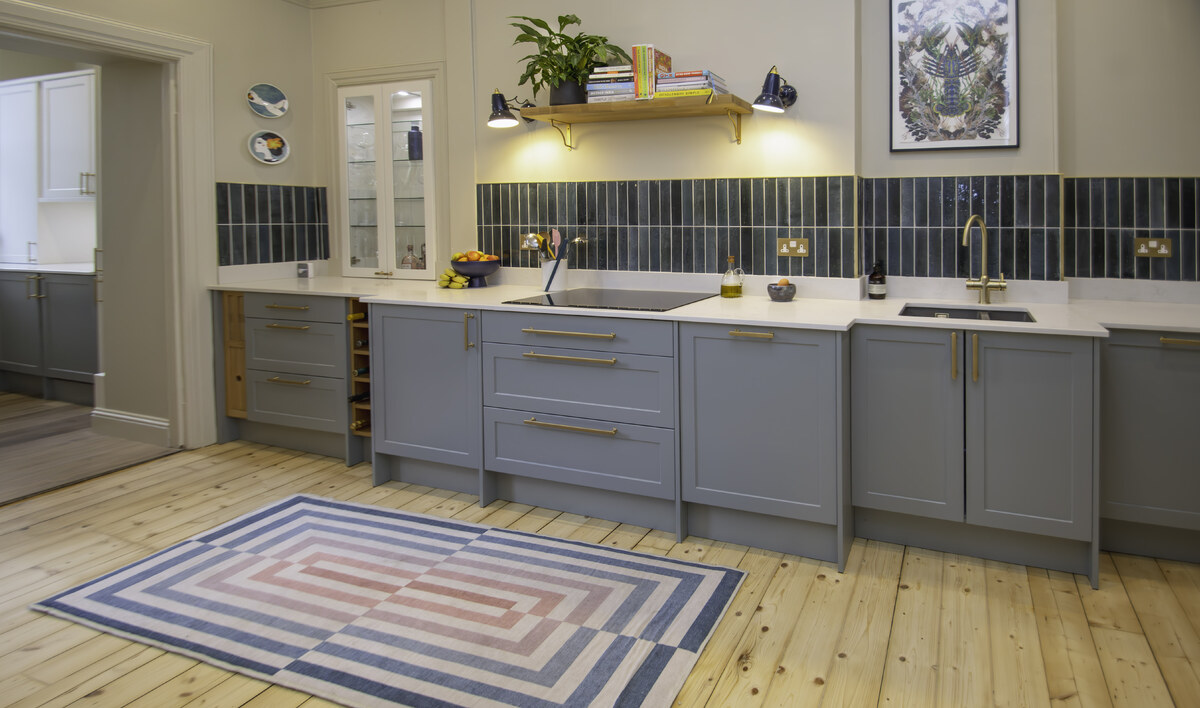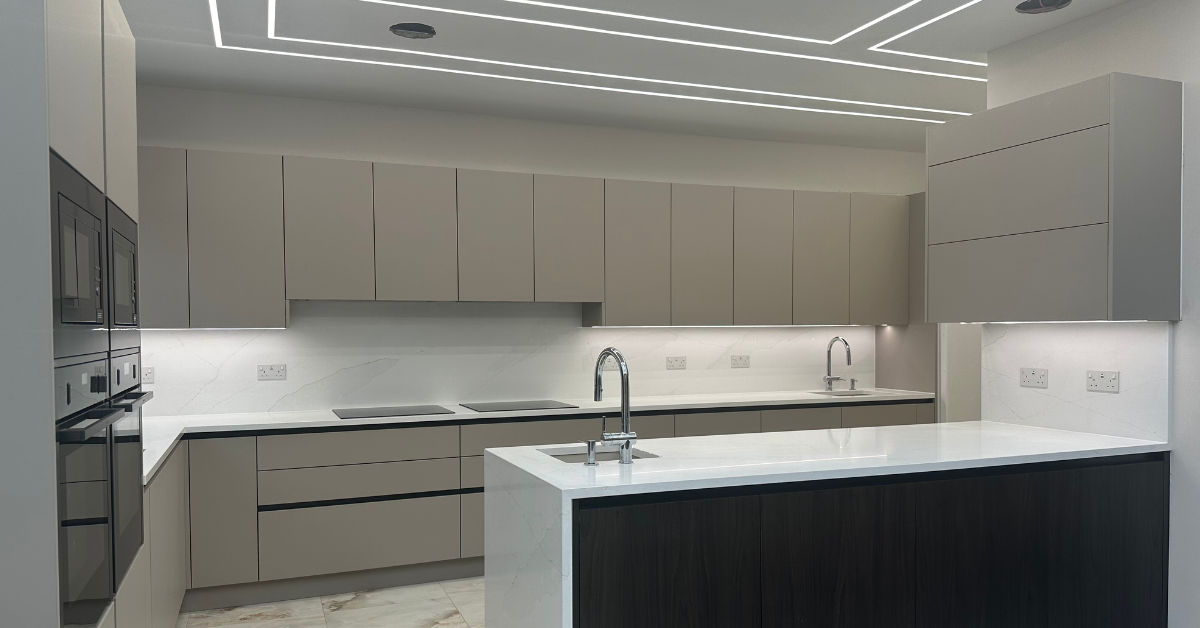Open-plan kitchens have become increasingly popular in modern home design. They provide a spacious area that combines cooking, dining, and living into one communal space. This type of layout not only enhances the sociability of the home but also maximises natural light and versatility in usage. Here’s how you can design an open-plan kitchen that is both functional and stylish, perfect for everything from daily family life to entertaining guests.
Design principles for open-plan kitchens
Creating cohesive zones
One of the first steps in designing an open-plan kitchen is to clearly define different zones while maintaining a cohesive look and feel. Use subtle dividers like breakfast bars, kitchen islands, or changes in flooring and ceiling treatments to distinguish the kitchen from the living and dining areas without blocking sight lines. This helps maintain an integrated feel while organising the space efficiently.
Choosing a harmonious colour palette
To achieve a unified appearance, select a colour palette that flows seamlessly between the kitchen and adjacent areas. Neutral tones like whites, greys, and earth hues are versatile and can be accented with bold colours through decorations and kitchen appliances. Consistency in your colour scheme is key to creating a harmonious space.

Optimising layout and functionality
Consider the classic work triangle between the sink, oven, and fridge to ensure efficient movement in the kitchen area. For open-plan kitchens, it's also essential to integrate plenty of storage solutions to keep the space tidy and functional. Features such as floor-to-ceiling cupboards and integrated appliances help maintain a sleek look.
Lighting strategies
Good lighting is crucial in open-plan kitchen designs. Layer different types of lighting to accommodate various activities. Ambient lighting creates a welcoming overall glow, task lighting focuses on work areas for safe cooking and preparation, and accent lighting can highlight architectural features or artwork.

Incorporating flexible dining areas
An open-plan kitchen often includes a dining area. Choose adaptable dining solutions such as extendable tables or a kitchen island that can also serve as a casual dining spot. This flexibility is particularly useful in accommodating both large gatherings and everyday family meals.
Blending with living spaces
To integrate the kitchen with the living room effectively, consider the layout of your seating and entertainment areas. Ensure that furniture is arranged to facilitate easy conversation and interaction between spaces. Rugs and textiles can help delineate areas while adding warmth and texture.

Material selection for durability and style
Select materials that are not only stylish but also durable and easy to clean, especially for flooring and countertops. Materials like hardwood, polished concrete, or large-format tiles are excellent choices for flooring as they can handle high foot traffic and spillages. For countertops, quartz or granite provides resilience and adds a touch of luxury.
Open-plan kitchen ideas for small houses
In smaller spaces, the open-plan kitchen can be designed to maximise every inch. Use compact appliances and consider a galley layout with a single row of cabinets to save space. Mirrors or reflective surfaces can also be employed to make the area appear larger than it is.

Integrating with outdoor areas
If possible, connect your open-plan kitchen with an outdoor space such as a patio or garden. Large sliding or bi-fold doors not only increase natural light but also extend the living space, ideal for summer entertaining and providing a seamless indoor-outdoor experience.
FAQs on open-plan kitchen design
How can I reduce noise in an open-plan kitchen?
Noise can be a concern in open-plan spaces, especially when the kitchen is used simultaneously with living or dining areas. To mitigate noise, you can incorporate soft furnishings such as rugs, curtains, and upholstered furniture, which absorb sound. Additionally, choosing appliances that are designed to operate quietly, such as dishwashers and fridge-freezers with low decibel levels, can significantly reduce background noise. Placing soft-close mechanisms on drawers and cupboards can also minimise noise from slamming doors.
Is an open-plan kitchen a good choice for families with children?
Open-plan kitchens are excellent for families with children for several reasons. Firstly, the layout allows for better supervision of children. Parents can easily keep an eye on their kids playing or doing homework while preparing meals. Secondly, open-plan spaces foster a more inclusive family environment where cooking and social activities can blend seamlessly. However, it's important to ensure safety measures are in place, such as keeping hazardous items out of reach and ensuring that there is no easy access to cooking appliances for young children.
How can I keep the open-plan kitchen clutter-free?
Keeping an open-plan kitchen clutter-free requires thoughtful storage solutions and regular organisation. Here are a few ways to do this:
- Invest in tall cabinets that reach the ceiling to maximise your storage space
- Utilise organisers with drawers and cupboards to keep utensils and cookware neatly arranged
- Consider furniture that can serve multiple purposes. For example, an island with built-in cupboards can provide additional storage while also serving as a prep station
- Make it a habit to declutter surfaces daily. Having a place for everything and returning items to their place after use can greatly reduce surface clutter.
- Integrate rubbish and recycling bins into your kitchen units to keep them out of sight
- Use wall-mounted racks for frequently used items like spices or cooking utensils, which can keep them handy while off the countertops







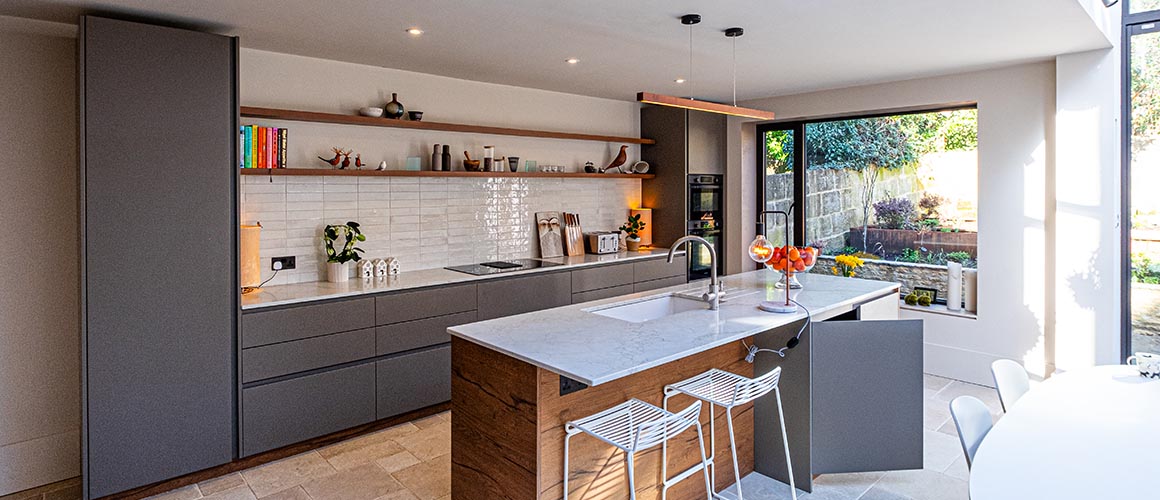
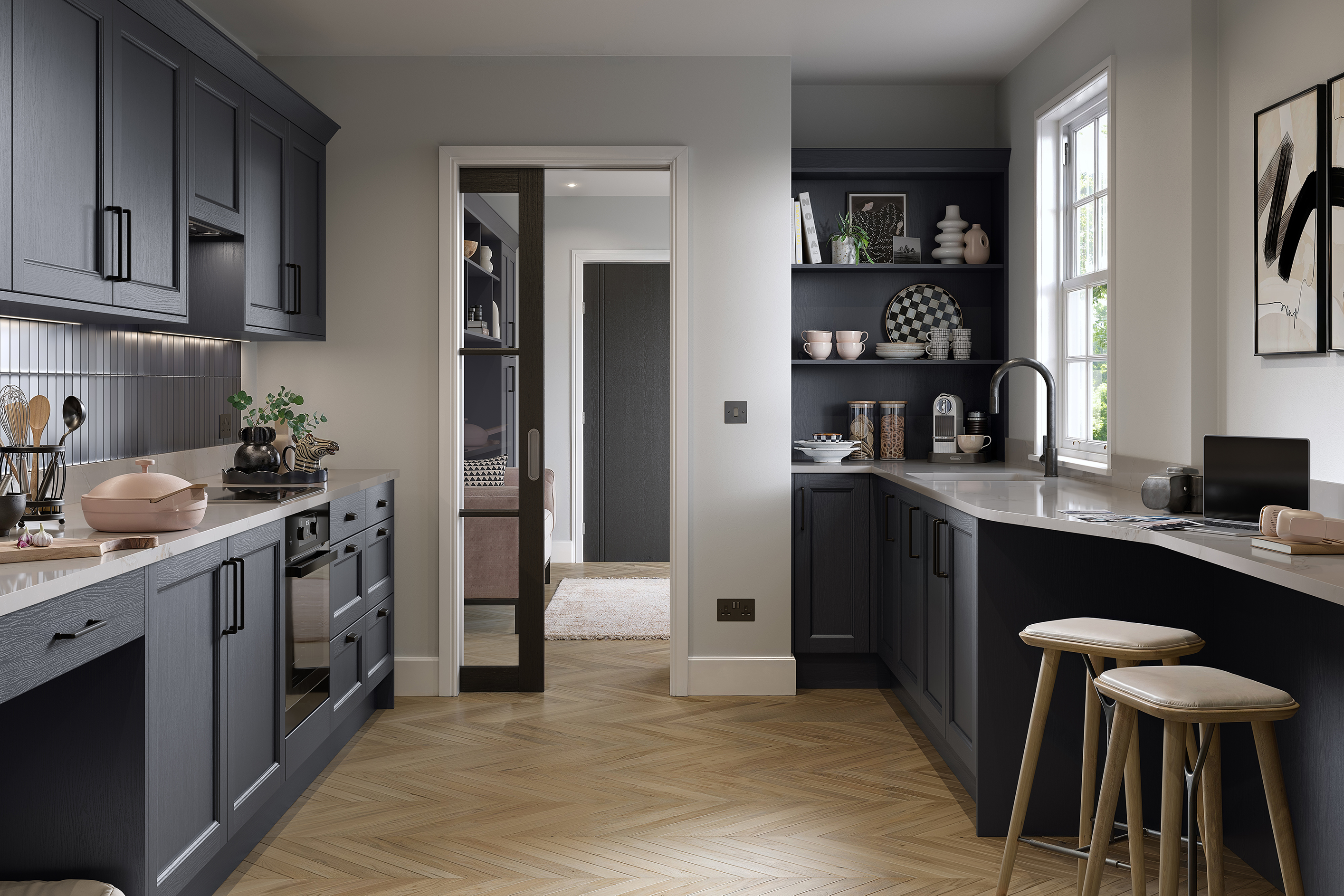
-1.jpg)
